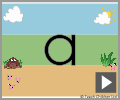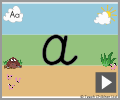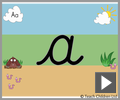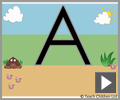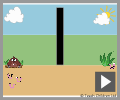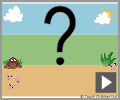Letters, numbers and symbols - FAQs
- Your child's letters are of a consistent and appropriate size, positioned correctly.
- Their handwriting is legible (so others can read it easily).
- They can produce, and maintain, a good speed.
- They have a fluid hand movement that is comfortable.
- The age at which to start a more formal approach to teaching letters varies and is dependent on your child’s fine motor skills ability. Some children can be taught from 4 years old while others may be 5 or 6 years old.
- Once the pre-handwriting patterns have been mastered a child will have the skill base necessary, and be more confident, to form letters, numbers and symbols.
- At this stage size is not important. If your child can draw the pre-handwriting patterns accurately, they are ready to move on to letters. As their gross and fine motor skills develop their writing will get smaller.
- Make handwriting sessions short and sweet (5 to 10 minutes). If you try to make them too long your child will become bored and reluctant to do more. As their confidence and skills improve so will the amount of time they are happy to spend learning and practising their handwriting.
- Teach the letter families in the order that they appear on our web pages.
- In the early stages of learning to form letters use a range of pencils, chalks, crayons and paints on both vertical and horizontal surfaces. The important thing is to show, and talk through with, your child how to form the letters using the correct directional movements.
- At an early age all the letters, capital and lower-case, will be the same size.
- As they progress they will be able to form the letters at a consistent size, with lower-case letters being approximately half the size of capital letters.
- Once your child is able to form the letters on plain paper at a size that is close to our free Level 0 Worksheets line height they are ready to progress to these.
- As your child's letter size reduces move to the next lined height paper - don't try to jump too quickly as your child will not be ready and this could put them off.
- We would recommend that you focus on teaching the lower-case letters first and the capital letter of your child’s name. Learning to write their name will get them excited about handwriting.
- As they master the lower-case letters introduce the remainder of the capital letters. It is important that both are taught so that your child can develop a speedy, fluid and legible handwriting style.
It is important to teach the lower-case letter font style being taught in school - print, cursive or continuous cursive. If the school has no particular approach to handwriting (which they should have) then it is a personal preference. Here at Teach Children we feel there is a strong argument for learning continuous cursive from the beginning.
Cursive:
- The letters start at different points (like the print font).
- The finishing points for all the letters is the writing line; except for o, r, v and w which have a top exit stroke.
- The single letter formations are taught with just the exit strokes.
Continuous Cursive:
- The starting point for all the letters is the same; on the writing line.
- The finishing points for all the letters is also at the writing line; except for o, r, v and w which have a top exit stroke.
- The single letter formations are taught with the entry and exit strokes, this makes the transition from single letter formation to joined handwriting very straightforward and allows it to occur sooner.
- We have grouped the letters together in families based on their shape and the directional pushes and pulls of the pencil needed to form them.
- By teaching the letters in these families the start point and initial pushes and pulls of the pencil are reinforced, making it easier for your child to remember them.
- Once your child has learnt to form the lower-case letters correctly, they are ready to join their writing.
- Size is not important; consistency of size is.
- All lower-case letters need to be placed correctly on the line and spaced appropriately next to each other.
- Joining can start before all the capital letters have been taught, as UK capital letters never join.
- The age at which to start a more formal approach to teaching numbers varies and is dependent on your child’s fine motor skills ability. Some children can be taught from 4 years old while others may be 5 or 6 years old.
- Symbols are introduced at the age of 5 or 6 years old.
It is normal for young children to reverse letters and numbers when writing. This should stop by the time they are 6 /7 years old.
Older children can reverse their letters and numbers, when writing, for the following reasons:
- They have poor visual and motor memory skills and so can't remember how to form the letters correctly.
- They have poor bilateral coordination skills.
Games and activities can help them overcome these issues.
Teaching the letters in letter families can reduce letter reversal as the reinforcement of the pencil movements helps cement the letter shapes in the visual and motor memory.


